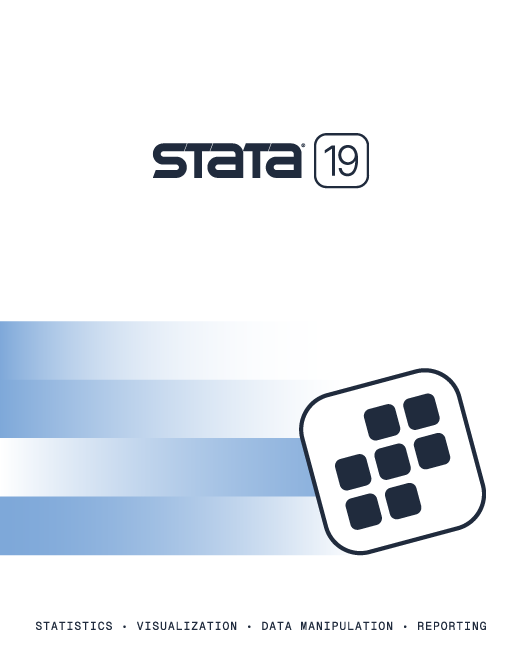

2025 Stata Conference • Nashville, TN • 31 July–01 August
| Title | Using nlcom with long expressions | |
| Author | Isabel Canette, Gustavo Sánchez, StataCorp |
There is a limit of 800 dyadic operators or 249 pairs of nested parentheses that can be used in an expression in Stata. The message
expression too long r(130);
indicates that a command is being called with an expression that is beyond those limits; therefore, you need to split the expression into smaller pieces. This can be tricky in the context of nlcom, so let us show you how it can be done.
Assume we run the following code:
sysuse auto quietly regress mpg price rep78 displacement foreign nlcom (normal(_b[price]* _b[rep78]) + exp(_b[displacement]*_b[foreign]))
The command nlcom will compute the variance of the expression
normal(_b[price]* _b[rep78]) + exp(_b[displacement]*_b[foreign]))
by applying the delta method. This variance will be used to determine the confidence interval reported.
Now pretend that the expression we passed to nlcom was too long. If we split it in two parts, we can use nlcom to compute a covariance matrix for those two expressions. If, in addition, we use the option post, the new values and their covariance matrix would be posted as current results. This would allow us to use nlcom again to obtain the solution for the original problem.
nlcom (a1:normal(_b[price]* _b[rep78])) (a2:exp(_b[displacement]*_b[foreign])), post nlcom _b[a1] + _b[a2]
Here is the output:
. nlcom (a1:normal(_b[price]* _b[rep78])) (a2:exp(_b[displacement]*_b[foreign])), post
a1: normal(_b[price]* _b[rep78])
a2: exp(_b[displacement]*_b[foreign])
| mpg | Coefficient Std. err. z P>|z| [95% conf. interval] | |
| a1 | .4999275 .0001062 4705.45 0.000 .4997192 .5001357 | |
| a2 | 1.044825 .0822261 12.71 0.000 .8836643 1.205985 | |
| mpg | Coefficient Std. err. z P>|z| [95% conf. interval] | |
| _nl_1 | 1.544752 .0822579 18.78 0.000 1.383529 1.705975 | |
Learn
Free webinars
NetCourses
Classroom and web training
Organizational training
Video tutorials
Third-party courses
Web resources
Teaching with Stata
© Copyright 1996–2025 StataCorp LLC. All rights reserved.
×
We use cookies to ensure that we give you the best experience on our website—to enhance site navigation, to analyze usage, and to assist in our marketing efforts. By continuing to use our site, you consent to the storing of cookies on your device and agree to delivery of content, including web fonts and JavaScript, from third party web services.
Cookie Settings
Last updated: 16 November 2022
StataCorp LLC (StataCorp) strives to provide our users with exceptional products and services. To do so, we must collect personal information from you. This information is necessary to conduct business with our existing and potential customers. We collect and use this information only where we may legally do so. This policy explains what personal information we collect, how we use it, and what rights you have to that information.
These cookies are essential for our website to function and do not store any personally identifiable information. These cookies cannot be disabled.
This website uses cookies to provide you with a better user experience. A cookie is a small piece of data our website stores on a site visitor's hard drive and accesses each time you visit so we can improve your access to our site, better understand how you use our site, and serve you content that may be of interest to you. For instance, we store a cookie when you log in to our shopping cart so that we can maintain your shopping cart should you not complete checkout. These cookies do not directly store your personal information, but they do support the ability to uniquely identify your internet browser and device.
Please note: Clearing your browser cookies at any time will undo preferences saved here. The option selected here will apply only to the device you are currently using.